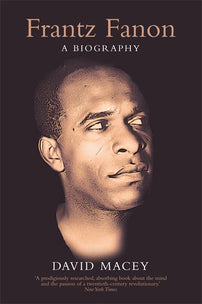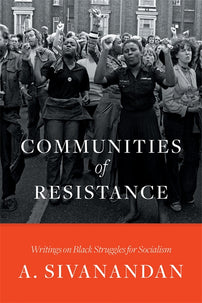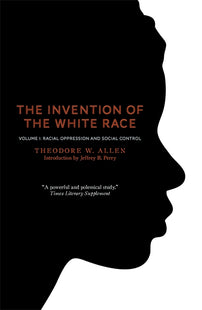Racial Terror by the Rules
Zoé Samudzi on anti-black psychic violence as a kind of governmentality.

One of the most egregious but canonically crucial colonial acts was to make God and Jesus white men. Jesus, in this imagination, is not a brown-skinned Jewish man from Judea (today’s Occupied Palestine): he’s a fair complected man with reddish or brown hair. The insidiousness of this anglicization of religious iconography far exceeds contemporary instances of whitewashing; for example, Hollywood’s miscasting of explicitly non-white characters with white actors. This whitening, which accompanied Christianity’s spread through the Global South by colonial missions, represents the elevation of white manhood to the realm of the divine. The wretched colonized masses would not just worship these figures, but whiteness itself. God was not simply a heavenly father, but rather a kind of conceptual precursor to the modern surveillance state in all of its racializing glory: an omnipotent, omniscient, omnipresent white man whose wrathful streak can and will punish you for your wrongdoing or reward you for properly adhering to his (sometimes contradictory) cosmic rules. White Jesus is a discursive tool, a controlling image within racially governing technologies.
The first chapter of the book of Genesis says God created mankind in his own image. Friedrich Nietzsche famously posed the question of whether Man was one of God’s blunders or God was one of Man’s. Countless others have argued the function of a Christian God as a projection of the values of Man. Black interrogations have yielded the most useful attempts to understand the nature of what was once called “Man” — and now “humanity — as a projection of colonial idealism. Sylvia Wynter sees the project of “Man” as the coalescence of European Renaissance and Enlightenment values: this Man is an individual, an agent that is free and is capable of rational thought and self-reflection. This idealized Man is immortalized by Leonardo da Vinci’s L’Uomo Vitruviano (The Vitruvian Man). Despite being universalizable, its Greco-Roman visual configuration of ideal proportionality, and its rooting in European aesthetics and anatomy undoubtedly racializes it/him. It was a vision of [hu]Man[ity] created in the image and espousing the values of ideal personhood. As Walter D. Mignolo glosses Wynter, this was an articulation “concocted and circulated by those who most convincingly (and powerfully) imagine the ‘right’ or ‘noble’ or ‘moral’ characteristics of Human and in this project their own image-experience of the Human into the sphere of Universal Humanness.” The colonial episteme was not generous in its designations of human: the empire, as we know, was contoured by anti-blackness and it codified “Black” not as human, but as private property (Cheryl L. Harris reminds us how race in the United States is not only phenotypical distinction, but also property relation).
Anti-blackness encompasses so many material things that need not be recited here, but one of its most disturbing facets is intangible: our alienation from humanity. White supremacist systems’ thriving relies upon this internalization. Imagine white supremacy as partly psychological conditioning. For Dylan Rodríguez, it is a militarized and enforced hierarchy of “human” difference; in Alexander Weheliye’s account, an enunciation of assemblages manifested through visualizations of orderings of “humans, not-quite-humans, and nonhumans.”
Memed images of anti-Black brutality and violence, both extraordinary in its nature and also painfully commonplace and familiar, compound all other reminders of our sub-humanity. The widespread circulation and consumption of these images is not simply careless social media usage, but a means through which whiteness (anthropomorphized for effect) is able to impose its will beyond classic coercion and the monopoly on the legitimate use of force that it flaunts enthusiastically. The accretion of these images, most importantly, constitutes a normalcy: they remind us of our place and position, they provide a unifying language to (non-Indigenous) non-Black people whose own humanity is built upon anti-blackness. They allow the state to gloat and revel in the impunity it has produced for itself.
What represents absolute power more than reducing adults to panic or tears through a single image? While riding the Muni in San Francisco not long ago, I encountered a white man. I scanned him for patches and tattoos and other hate group-identifying insignia and saw a huge swastika tattoo on his forearm. Recalling the racial stabbing attack by a neo-Nazi on a Portland light rail that left two men dead, I froze. No words were exchanged, I attempted to steady my breath and pretend I wasn’t looking at him and I could feel his eyes boring a hole in my head. He got off of the train a couple of stops later, and when I finally got to my own stop, I sobbed and called my mother.
Who can defeat you when you hold the minds of your subjects in a vice? Racial terror, whether undertaken by state or non-state actors (or some collusion between them), is a rule-based necropolitical system. Our fear is a response to violent stimuli and also the means by which the state counts on us to “self-govern”: in theory, “proper” self-governance is what assures our survival — respectability politics, not challenging authority (though success and survival are never assured when the state can only produce anti-blackness). The politics recently labeled (though long attacked) by the FBI as “Black Identity Extremism” pose a threat to and is a refusal of this rule-based racial order, and the punishment, historically, has been severe and often fatal.
Our internalization of these enforcements, conscious or otherwise, is present in other corporal ways. Epidemiologists often speak of “predisposition” to illness or pathology: they say that Black risk for diabetes or cardiovascular disease or stroke is genetically determined or somehow innate to the biophysiological Black condition. (On the American medical system, though, Lundy Braun writes about the racist history of the spirometer, which confirmed that whites had superior lung capacities than Blacks. Thomas Jefferson, in his 1785 Notes on the State of Virginia (where he also asserted that male orangutans preferred Black women to the females of their own species), noted the inferiority “pulmonary apparatus” of Blacks, which indicated that their bodies were solely fit for labor and little else; Samuel A. Cartwright, the identifier of drapetomania as mental illness, argued that slavery was beneficial for blacks as it helped their weak lungs to “vitalize” the blood and that “liberates their mind when under the white man’s control.”)
We know, however, that the experience of racial trauma takes a tremendous toll on human functioning, not to mention how structurally delineated racial geographies can heavily predetermine life expectancy, class, and resource access. In 2016, Venida Browder arguably died of a broken heart 16 months after her son Kalief hanged himself following his undoubtedly traumatic incarceration at Rikers Island — the stress of multiple lawsuits against the city of New York compounded by the unbearable grief. On December 30, 2017, Erica Garner-Snipes, the daughter of Eric Garner and outspoken activist in her own right, died of a massive heart attack at age 27: we were reminded, again, the toll these traumas take on Black women.
The aggregate effect of constant exposure to racism, among many other things, can result in a kind of race-based post-traumatic stress disorder. Trauma is not simply a single event, but a culmination of seemingly insignificant ones (including things referred to as microaggressions) that comprise the normal landscape of our Black lives. One might characterize many experiences of blackness like the positive and negative reinforcements necessary to heel an animal or silence a petulant child. Our mythical reward is proximity to whiteness (i.e. both humanity and/or material reward vis-à-vis the American Dream); your punishments range from more subtle alienation or humiliation, physical violence, confinement, death. Most of us are intimately familiar with this function of the system.
In the early hours of 2018, a few friends and I walked through Oakland to a New Years gathering. Seeing flashing lights, we knew the party had likely been shut down due to “noise complaints,” and after confirming that, we turned to leave of our own volition. As we were leaving, three Oakland Police Department officers shepherded us off the street tapping their sidearms, the rhythm resembling a kind of racist Morse code only discernible to us well-trained Black subjects. My indignation turned into familiar terror quite quickly. I remembered a recent study that found a correlation between long police shifts and an increased likelihood of targeting and shooting Black people; I remembered that Oscar Grant was murdered by Johannes Mehserle, a BART Police officer, around that same time 9 years prior. The repetitive sound tapped into a primal fear of my own, and it reminded me of the rules to which I was beholden and upon which my Black life often depends.
What, then, demarcates this uneasy boundary between coping and capitulation? Between a complicity through compliance and the refusal of needless martyrdom? Frantz Fanon described blackness as a product of “a series of affective disorders” from which we must collectively extricate ourselves. But how? What does it mean to individually or even collectively de-shackle ourselves within a system predicated upon our victimization? A system that sustains itself with a carceral logic that demands we understand ourselves as criminal and deviant, and which ensures our humanity is won by convincingly demonstrating otherwise? We can cope, we can subvert, we can create liberatory epistemologies that refuse the subjugated position we are forced into. But it is not until racial capitalism and all of its various iterations are destroyed that we can be free of these conditionings and psychic violations.
Zoé Samudzi is a Black feminist writer and doctoral student in Medical Sociology at the University of California, San Francisco. She is co-author, with William C. Anderson, of As Black As Resistance: Finding the Conditions for Liberation, forthcoming from AK Press.
[book-strip index="1" style="display"]




